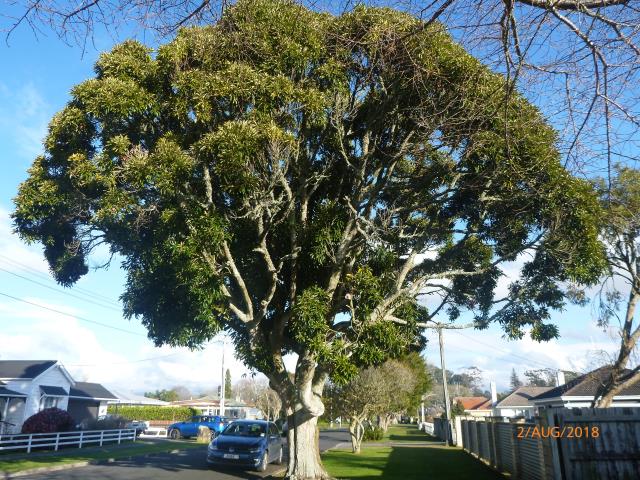
Japanese evergreen oak (Lithocarpus edulis)
Here’s an unusual one! Not only is it included in the list of notable Cambridge trees but also, sadly, on the International Union for Conservation of Nature’s (IUCN) Red List of threatened plants. Located near 24 Stafford Street, this architectural variety of "stone oak" with its dark, glossy, leathery leaves, slender, spikey, cream flowers resembling those of the Spanish chestnut, and seeds that resemble acorns, is now mainly an ornamental tree which can grow to 15 metres.
The nuts are actually edible, but because they contain bitter tannins are usually soaked in water before being dried and ground into meal for thickening soups and making bread or porridge. The bark of the tree is also rich in tannins and was used in the past as a dye and preservative for ropes. The wood is very hard and heavy and used mainly for fuel.
There are several different species of the genus lithocarpus; they include a tropical variety from South East Asia which grows to 30 metres in height, and a temperate variety from Oregon, USA which reaches only 10 metres. All, however, are found in lower montane forests growing on slopes with moist but well-drained soils.

